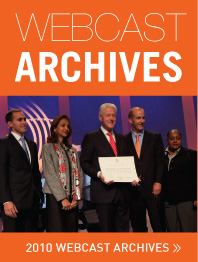Recovering spy, serial pioneer for open and public intelligence
Posted: September 28, 2010 10:25 AM
It's Official — Steele Won Virtual Presidency
Click on Title to Read at Huffington Post and/or Comment.
I held a bi-partisan vote today, with me representing the Democratic Party while I represented the Republican Party. Strict ballot access controls ensured a unanimous outcome — the new Virtual President of the United States of America is Robert David Steele, or for Latinos, Roberto David de Steele y Vivas.
Over the next 45 days, on Tuesdays and Thursdays I will announce one critical policy decision, always in the context of a balanced budget and always with the public interest in mind — this is not going to be pretty, but 45 days from today, every American will be able to compare my virtual track record with the actual track record of those seeking re-election, or in the case of a tiny handful that overcame enormous obstacles, those seeking election for the first time.
Here is my first decision: America needs three Vice-Presidents, not one; a Vice President for the Commonwealth, who should be the Principal Vice President; a Vice President for Education, Intelligence, and Research; and a Vice President for National Security. I also reject the “winner take all” concept for naming my Cabinet, and will appoint a Coalition Cabinet in my next posting. When I run for actual election in 2012, all three Vice Presidents and all Cabinet members will be named 60 days prior to the election, and I will challenge my opponents to not only do the same, but to engage in cabinet level debates across the land, restoring the League of Women Voters as the honest broker of these debates. 30 days prior to Election Day, I will publish a balanced budget online, and I and my Cabinet will personally engage in a National Deliberative Dialog online, to ensure that before I am elected, my proposed balanced budget has the general approval of the entire voting public.
Education and restoration of the Republic will be my primary focus. If I fail, I will support Alaska, Hawaii, the Pacific Northwest, Texas, and Vermont in their growing demand for secession from the United States of America. The government we have today is out of control and out of touch; its time we flush the toilet we call the two-party tyranny.
Thursday: Virtual Sunshine Cabinet Named








